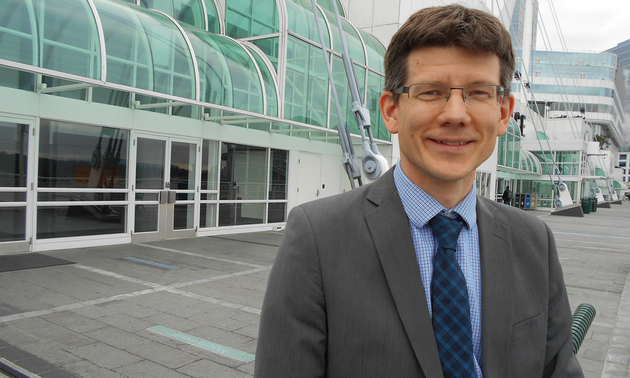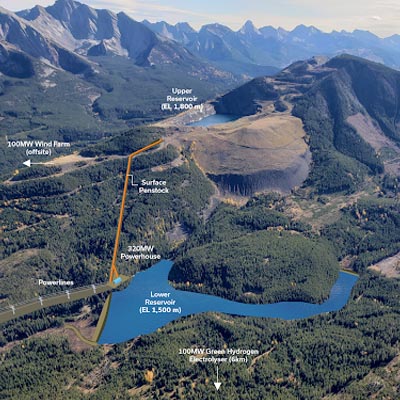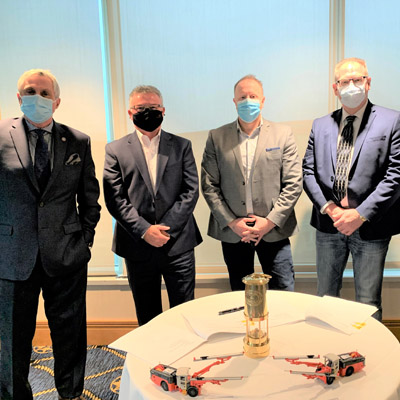Things looking up for both mining and mineral exploration in B.C.
Revenues, employment and commodity prices are up in BC mining industry.

AME's Jonathan Buchanan, director, Information and Public Affairs — Robert Hawkins photo
Although happy days are not exactly here again, both mining and mineral exploration in British Columbia can look forward to better times, according to recently published surveys by PwC and EY, two Canadian consulting firms.
In an announcement, Mark Platt, PwC Canada’s B.C. mining leader, said, "The last year was another challenging year for the B.C. mining industry due to the continued volatility in global metal and mineral prices.”
Since the end of 2016, however, Platt said there has been an upward trend in the prices of British Columbia's key mining commodities.
"B.C. mining companies continued to work hard to keep their costs under control," Platt said. “The same trend continued in the first quarter of 2017.”
While it may be too soon to call it a recovery, the report said, the outlook is brighter today than it has in been in recent years.
“While several challenges remain — including the volatility of commodity prices, keeping costs down, and attracting more investment in the short and long term — the future looks promising,” the report said.
In 2016, the industry recorded net mining revenues of $7.3 billion, up from $6.3 billion in 2015.
According to the PwC report, entitled BC Mining Report, Building for the Future: The Mining Industry in British Columbia 2016, the increase in revenues was the result of an increase in gross mining revenue and a decrease in costs for smelting, refining and freight.
The prices of commodities in general, and for coal and copper in particular, started to increase by the end of 2016 and were maintained in the first quarter of 2017.
“That augurs well for the B.C. mining industry in 2017,” the report said.
Mining employment in British Columbia is also beginning to recover, as mines advance, open or restart across the province.
According to the PwC report, the number of jobs directly related to mining was up slightly between 2015 and 2016, from 9,221 to 9,329.
The report is based on a survey of 28 mining companies with operations and activities in B.C. Participants comprised 14 operating mines, three projects in the exploration stage, nine in the permitting or environmental assessment stage, one smelter operation and one in the care and maintenance stage.
In addition to mining, the fortunes of the mineral exploration sector have taken a turn for the better.
According to a new survey – the British Columbia Mineral and Coal Exploration Survey – the focus of exploration in BC is shifting to grassroots and early-stage exploration. In an announcement, Iain Thompson, associate partner in the Canadian mining and metals practice of consultancy EY, said "We're seeing a number of projects that supported exploration expenditure over the past five years now evolving into the mine development phase.”
One of the results of this evolution has been a drop in expenditure in the capital-intensive later stages of the exploration life cycle.
According to the report, “While the overall downward trend in exploration in B.C. continued in 2016… grassroots and early-stage projects actually experienced significant growth in exploration expenditure in 2016.”
Grassroots expenditure increased by almost one-quarter to nearly $15 million, and early-stage expenditure increased by almost one-half to a little over $40 million.
Thompson said most exploration in B.C. is taking place in south-central and northwest B.C. The main commodities that are being explored for are copper, gold, silver and zinc.
The survey is a joint initiative of EY, the Government of British Columbia's Ministry of Energy and Mines, and the Association for Mineral Exploration British Columbia (AME).
"Notwithstanding the current downturn, the industry remained an important source of jobs and was – and continues to be – an economic contributor to communities throughout the province,” said Gordon Clarke, director of the British Columbia Mineral Development Office.
Jonathan Buchanan, director of information and public affairs at AME, said, "Exploration companies continue to demonstrate their commitment to local communities and First Nations engagement. In fact, a significant percentage of exploration budgets remain in the local community."
Two-thirds of survey respondents said that at least one-half of their budgets was spent locally.
Almost three out of 10 said 90 per cent or more of their budgets was spent in the local community.
The survey was based on information gathered in 2016 from 30 prospectors, 177 companies and 259 projects in British Columbia.




